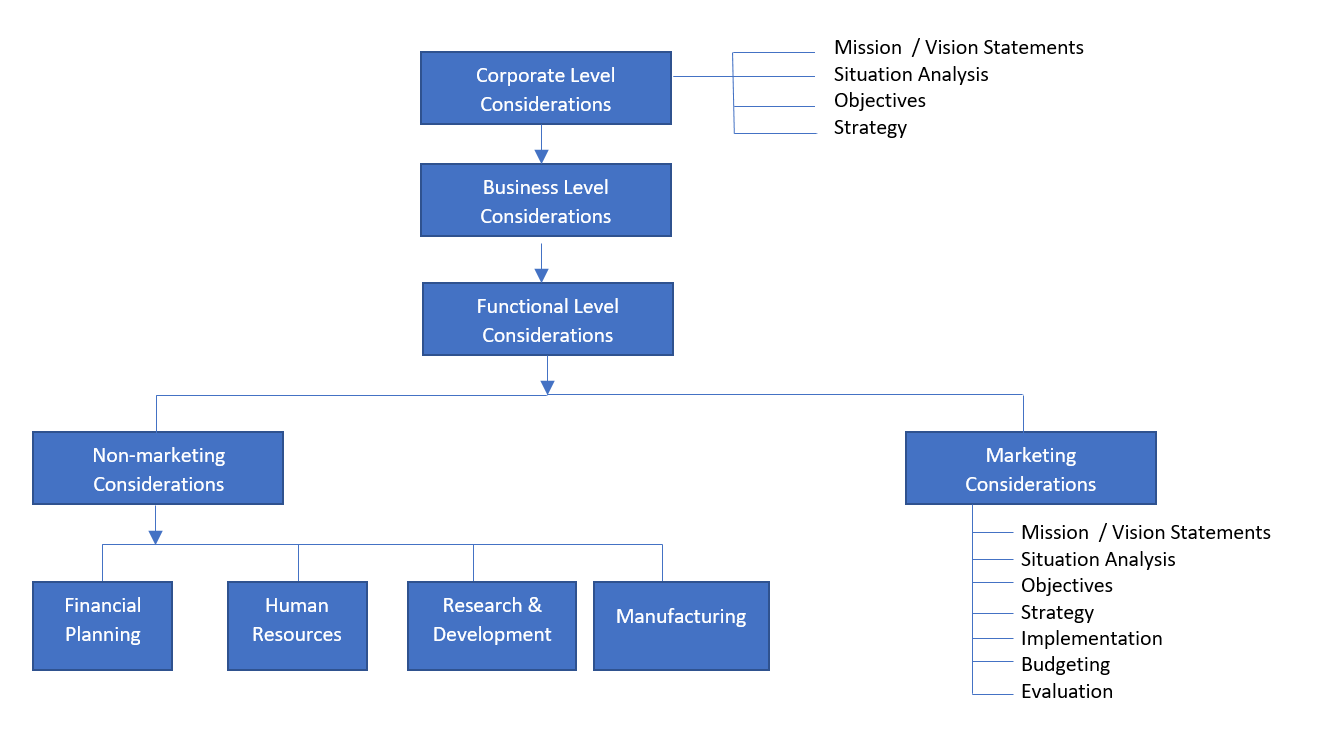2.1 The Strategic Planning Process
The words ‘strategic planning’ get thrown around quite often but are not always used properly. Strategic planning is an important step for every organization that should be conducted on an annual basis. It is the process of evaluating the organization’s mission, vision, and strategies for the coming years. It emphasizes long-term planning: what should be done now to position our organization to achieve its long-term goals and mission? Proper investment in the present, can help pave the way for success in the future.
Strategic planning is done at the corporate level and involves executives from all areas of the business and, possibly, board members. In a small business, this may just be one person taking a day to research and strategize, uninterrupted. In large organizations, this can be a multi-week session involving invited guests and intense debate.
While many areas, including marketing, contribute to this process, the end result provides the functional areas, like marketing, the goals for their departments.
The image below illustrates how a company moves from Corporate Level considerations, including mission and vision statements, situation analysis, objectives, and strategy, to business level considerations to functional level considerations which include non-marketing and marketing considerations. Examples of non-marketing considerations are those of finance, human resources, research and development, and manufacturing. Marketing considerations include mission and vision statements, situation analysis, objectives, strategy, implementation, budgeting, and evaluation.
Figure 2.1: Strategic Planning and Organization Levels


